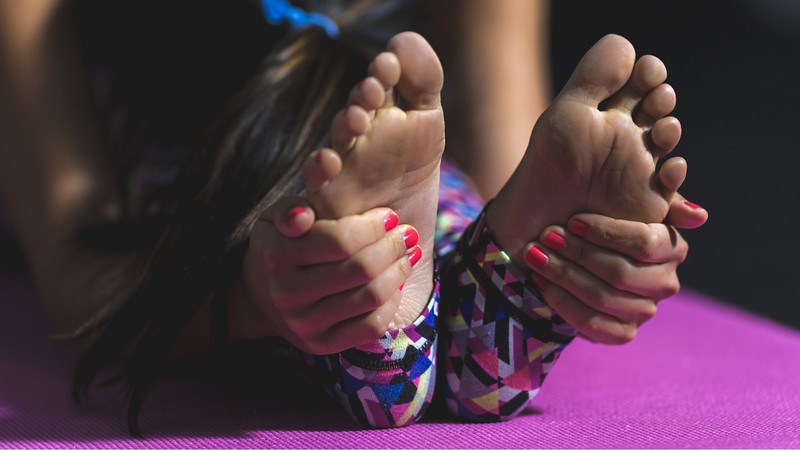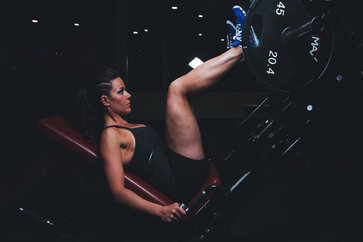5 Effective Yoga Poses For Sound Sleep & Fight Insomnia
Yoga for better sleep has been recognized science ages but scientists have just begun to validate the claims. The research has been performed at Harvard Medical School, in 2004, on the people, who suffer from insomnia.

The people were given a Yoga regimen for eight weeks; it was found that both the quality of sleep and the length of the sleeping time had also increased. In this study, the participants were given a schedule to practice basic yogic breathing exercise known as “pranayama”, and other asana exercises, including meditation.
The other research released by the “Associated Professional Sleep Societies” on meditation in 2009 stated that mediation could be an effective intervention in the treatment of insomnia.
In this research, they choose 11 healthy participants, the age between 25 and 45, who suffered from chronic insomnia. In a study, it was found that the subjects, who practiced Yoga during the day, had fewer sleep problems at night.
The Best Yoga For Sleeplessness
The most common reasons for insomnia or have difficulty falling asleep are due to stress or anxiety and it is related to the brain. In Yoga term, our brain is regarded as an object and the body as a subject.
The brain generates energy and spread out the energy to the other parts of the body. This is the only form of exercise that is highly proficient in involving the mind and soul.
Yoga can be a natural method to fight insomnia and to fall asleep more easily. On the other hand chemicals in medication can often have side effects. Below are the poses of yoga for sleep insomnia or deep relaxation that will also help you to fall asleep and rest better at night
1. Padangusthasana (Posture Of The Big Toe)
Padangusthasana is a standing bending forward pose of yoga. The word Padangusthasana is comprised of four Sanskrit pada meaning “the foot,” angustha mean “the big toe,” and asana means “the pose.”
It is a simple yoga pose in which the practitioner bends and grabs the big toes while keeping the legs’ upright. This posture boosts our kidney and liver stimulating our parasympathetic nervous system, which is responsible for releasing tensions and put our body to sleep.
How to do yoga poses?
- Stand up straight and place feet parallel to each other, there should be at least six-inch gap at the feet.
- Contract your thigh muscles in a way that your kneecaps get lifted outwards.
- Slowly bend forward without losing control aiming to touch your knees and forehead.
- Grasp the big toes of each foot firmly with the index fingers and thumb of each hand.
- Inhale and lift the torso with straightening your elbows and exhale and bend towards your toes again.
- Breathe deeply and continuously for 1-3 minutes.
2. Chandra Bhedana Pranayama (Respite From The Moon)
Also known as Chandra bhedi pranayama is a breathing exercise, the word Chandra means moon and the word bhedi means piercing, breaking through something. We use our two nostrils for breathing, in the yogic term the nostrils is term as Nadi.
The right nostril is called Surya Nadi and left nostril as Chandra Nadi. Surya means sun god it is associated with the heat energy and Chandra means moon which is associated with the cooling energy of our organism.
Breathing and exhaling through the nostril helps to move the stress away from the mind and bring relaxation to the mind so that it is easier to fall asleep.
How to do yoga poses?
- Sit in a comfortable position.
- Make the seal of the deer with the right hand, press the right hole with the thumb and inspire through the left hole.
- Now stop pressing the right hole with your thumb, then press the left hole with the ring finger and expire through the right hole.
- You can do this breathing for 1-3 minutes or until we begin to feel calm and calm.
3. Uttana Shishosana (extended puppy posture)
It is a passive back stretch exercise ideal for sleep, as it helps to improve blood circulation, in addition to relieving tension and opening the shoulders.
The gentle massage caused by the contact of the forehead to the ground will stimulate the pituitary gland, which controls melatonin and the sleep cycle of our body.
How to do yoga poses?
- Start with sitting Tabletop Position with your shoulder stack over wrists.
- Keeping the hips on the knees, bring your hands forward.
- Bend down your chest towards the floor keeping your elbows up.
- Slowly down your forehead to the floor, activate your arms by squeezing (pressing) into the palms of your hands.
- Keep elbows and forearms above the ground.
- Draw your shoulder blades onto your back and keep your hips up high toward the roof or ceiling.
- Now draw your neck to relax, inhale into your back, extending your back in both directions.
- Breath inhale and exhale for 6 to 12 times and slowly release the pose and get back into the tabletop
4. Agnistambhasana (Fire Log Pose)
Agnistambhasana is a simple sitting pose that has many benefits. The word Agnistambhasana is a Sanskrit name which comprised of three-word Agni is referred to as Fire, Stambha a Statue and the Asana are to sit, pose or posture.
It is also known by other names such as Double pigeon pose burning log pose and Fire log pose. As the hip muscles are freed our body reciprocates by discharging the tension of other muscularity and organs making ready with the body, for the moment, of sleep.
How to do yoga poses?
- Sit on a blanket of yoga extend the left leg forward and bend it 90 degrees to the height of the knee.
- Then bend the right foot and place over the left knee so that your right leg rests on top of the left.
- Cross your shins in a Sukhasana (easy pose).
- While bringing your hands forward exhale increasing the stretch.
- Hold the posture for approximately 1 minute and alternate legs.
5. Viparita Karani (legs position up against the wall)
This is completely a passive posture that allows us to concentrate on the conscious relaxation of stretching by preparing the mind for sleep. In addition, it also benefits in draining bad blood from the legs by boosting the circulatory system.
How to do yoga poses?
- Place a block or reinforcement 10 centimeters from the wall.
- Place the sacrum on the reinforcement so that the bones of the posterior occupy the space between the reinforcement and the wall.
- Bring the arms straight to the sides, palms facing the sky.
- Maintain this posture for 5-15 minutes
All this yoga posture will make a brain calm it will give relax to your entire body and every muscle or group of muscles in the body. Starting from the feet and slowly rising up to the muscles of the face.























